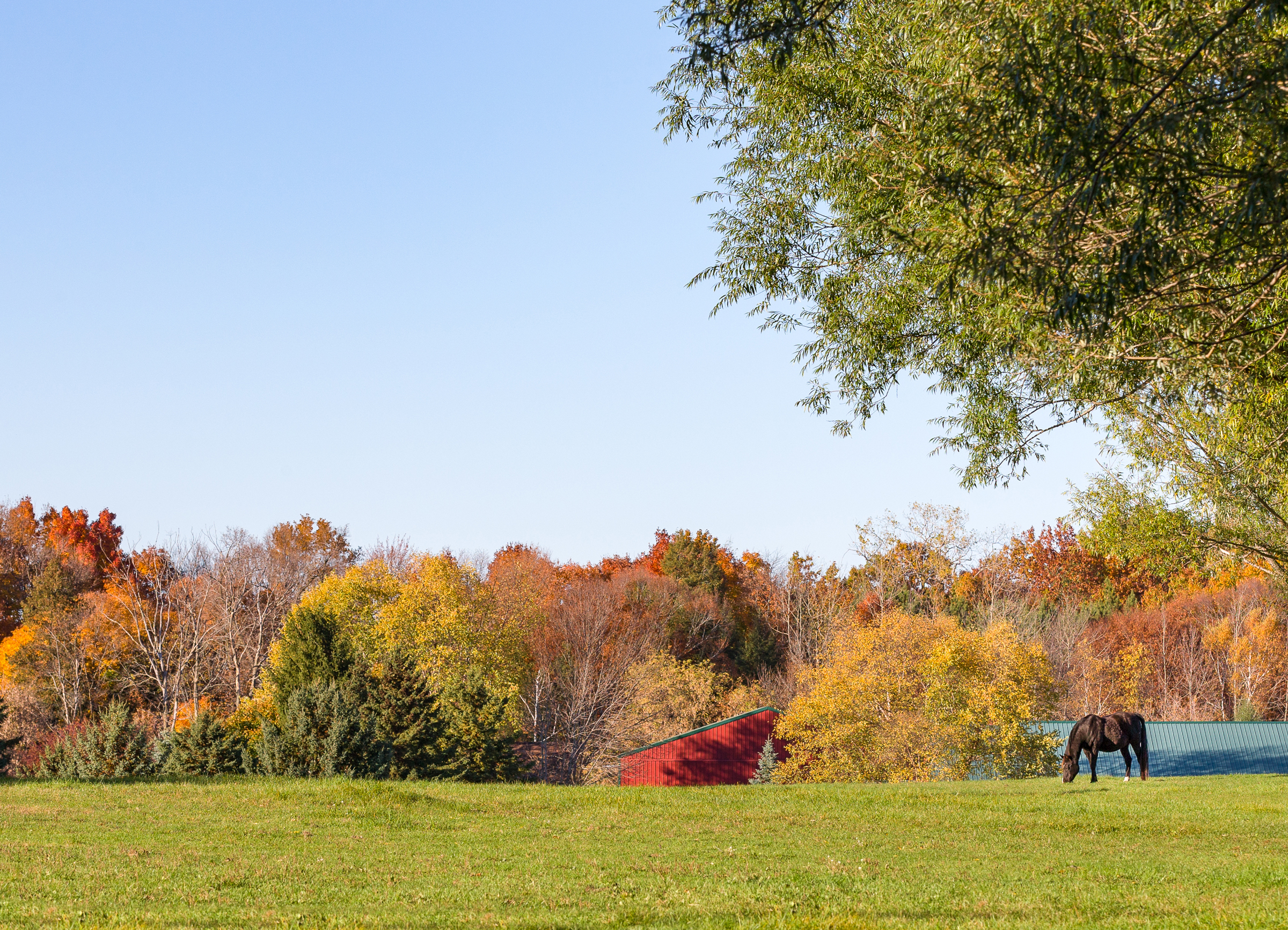
Fall is a good time to assess horse pastures to see what might be needed to make them better for next year. Dr. Bob Coleman, State Extension Specialist, University of Kentucky, recommends taking a look at soil fertility, but your options for fertilizing are often dependent upon locality and climate.
“It is usually an excellent practice to fertilize in the fall,” said Coleman. “In our area, in our type of environment, we generally recommend fertilizing with nitrogen in late September or early October—not to get a lot of extra forage at that time of year, but to enhance health of the plants. This will help them develop stronger root systems so they can do better over winter and have a good start next spring. Fertilizer in the fall will help thicken up a grass stand and promote tillering of the plants.”
In many cases it is best to split the nitrogen application. Figure out how much you need per acre and put half of that on, give it some time, then apply the rest. “Rather than putting on 60 pounds per acre, do two applications of 30 pounds. This provides more benefit for the plants. If you could time it with some fall rain, that would be perfect,” he says.
“If you can put the second application on by early October that would be ideal. In areas with mild weather (and you know what the weather might be), you could probably go as late as the end of October. If the second application is a bit late, and it gets cold and plant growth shuts down sooner than it normally would, at least you have some on already and will get some value from that.”
When you fertilize a pasture, you should take the animals off that day and leave them off until the fertilizer is all dissolved and in the ground.
“Horses are not as susceptible to nitrate poisoning as cattle, but there might be some piles here and there if whoever put the fertilizer on was turning a corner, and these piles might take a little longer to dissolve,” said Coleman. “Sometimes all it takes is a heavy dew the next morning, but taking the horses off for a day or two might be a good safety measure.”
Natural fertilizer, such as composted manure/bedding or annual corral clean-out, is a reasonable alternative to commercial fertilizer. If it has been properly composted, it might have longer-lasting benefits. Manure should always be composted before you spread it. “If it is not broken down yet, you are putting too much carbon on your pasture, especially if the manure contains bedding; this will delay how fast it breaks down,” Coleman said.
“Composting also helps eliminate weed issues and parasites if the composting process gets hot enough,” he noted. “Composting is the best management practice, recycling nutrients that would otherwise go to waste,” he explained.
“If you are looking for a nitrogen recommendation from Extension services, be sure you tell them it is for a grass pasture,” advised Coleman. “When we do soil samples here, we don’t even check for nitrogen because those levels are continually changing; we are more concerned about phosphorus and potassium, and there are some standard recommendations for nitrogen. If you need to stimulate grass growth, you put nitrogen on in the spring. If you are trying to stimulate plant health, you do it in the fall.”
Common practice is to soil test every 2 to 3 years to determine if you need to add phosphorus or potassium.


